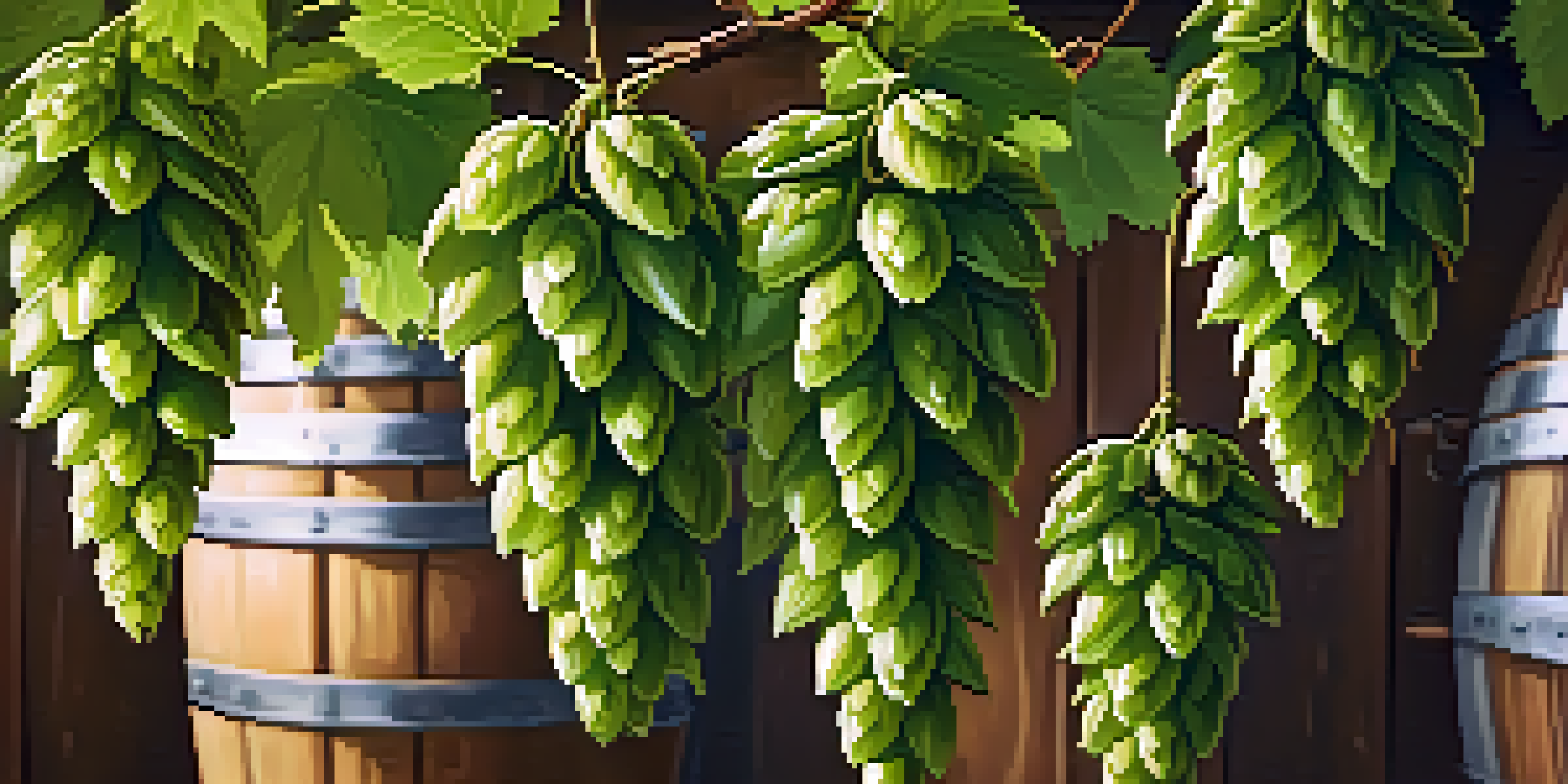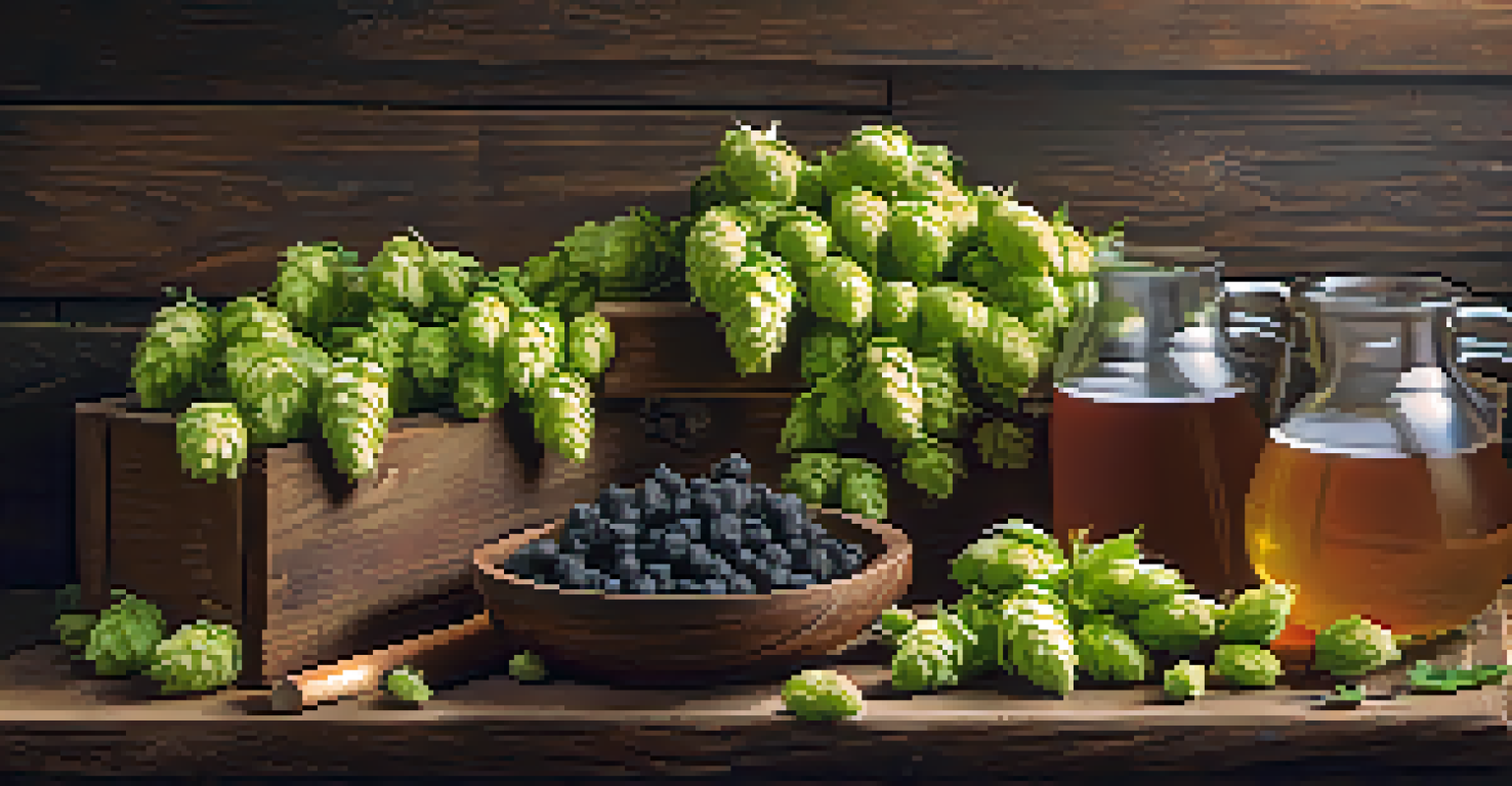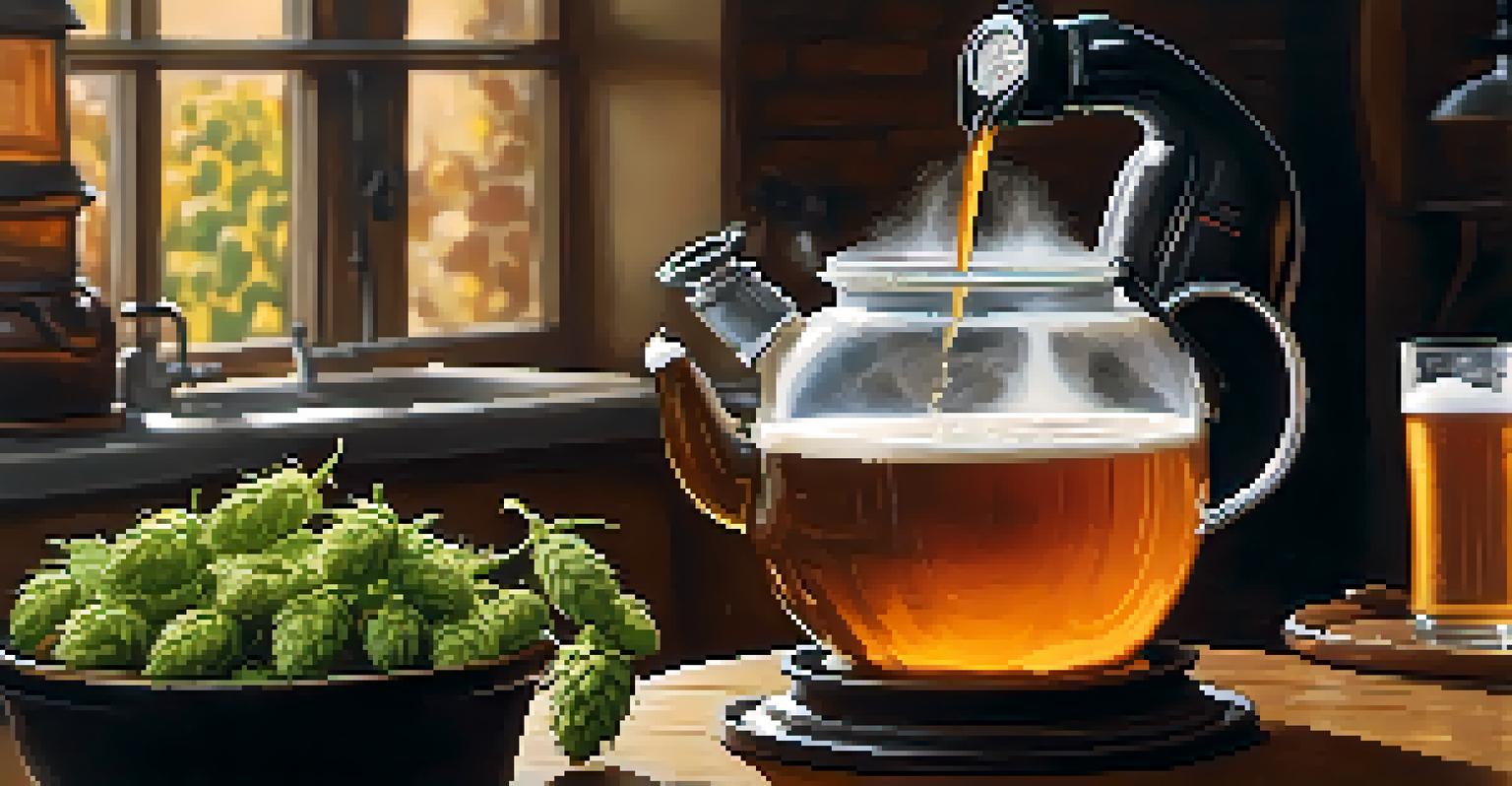Exploring Different Hops: A Guide for Home Brewers

What Are Hops and Why Do They Matter?
Hops are the flowers of the hop plant, Humulus lupulus, and they play a crucial role in brewing beer. These little green cones add bitterness, aroma, and flavor to the brew, balancing the sweetness from the malt. Without hops, beer would be a sweet, unbalanced beverage that lacks depth.
Without hops, beer would be a sweet, unbalanced beverage that lacks depth.
Beyond their flavor contributions, hops also have preservative qualities due to their natural properties. This means that they help to extend the shelf life of your brew, making them essential for both taste and longevity. Understanding hops is fundamental for any home brewer looking to create a well-rounded beer.
As you venture into home brewing, knowing how to choose and use different hops can significantly impact your final product. Each hop variety brings its unique characteristics, influencing everything from bitterness to aroma. Let's dive deeper into the different types of hops and how they can elevate your brewing game.
Types of Hops: An Overview
There are numerous hop varieties available, each with its specific flavor profile and aroma. Common types include Cascade, Centennial, and Saaz, among many others. Cascade hops are known for their floral, citrusy notes, while Saaz hops lend a more earthy and spicy character to the brew.

Understanding the differences between these hop varieties can help you select the right one for your recipe. For example, if you’re aiming for an IPA, you might lean towards hops that impart strong citrus or pine flavors. In contrast, for a lager, you might prefer the subtlety of noble hops.
Hops Enhance Beer Flavor and Aroma
Hops are essential in brewing as they add bitterness, aroma, and flavor, balancing the sweetness of malt.
It's helpful to think of hops as the spices of beer. Just as a pinch of cumin can change the flavor of a dish entirely, the right hops can transform your beer from ordinary to extraordinary. As you explore different hops, keep in mind the overall profile you want to achieve in your brew.
Bitterness vs. Aroma Hops: What’s the Difference?
Hops can generally be categorized into two types: bitterness hops and aroma hops. Bitterness hops are typically added early in the brewing process to contribute to the beer’s bitterness level, which balances the sweetness from malt. This is crucial for styles like IPAs, where a higher bitterness is often desired.
The beauty of home brewing lies in the freedom to experiment.
On the other hand, aroma hops are added later in the brewing process, allowing their fragrant oils to shine through without contributing too much bitterness. This means that if you’re looking to enhance the aroma of your beer, you’ll want to add aroma hops during the last few minutes of the boil or during fermentation.
Understanding the role of each hop type is vital for achieving the desired taste and aroma in your home brew. It’s about finding the right balance between bitterness and aroma that will ultimately define your beer's character.
Using Hops at Different Stages of Brewing
The timing of when you add hops during the brewing process can greatly affect the final product. For instance, adding hops at the beginning of the boil will maximize bitterness, while adding them towards the end will enhance aroma. This strategic planning can make a world of difference in your beer’s profile.
In addition to the boil, dry hopping is another method that involves adding hops during fermentation. This technique infuses your beer with intense hop aromas and flavors without adding extra bitterness. Many brewers swear by dry hopping to achieve that fresh hop character they crave.
Understanding Hop Varieties Matters
Different hop varieties, like Cascade and Saaz, offer unique flavor profiles that can significantly impact your beer's character.
Experimenting with hop additions at various stages allows you to tailor your beer to your specific taste preferences. Don’t be afraid to play around with different timing and combinations to see what works best for you and your brewing style.
Understanding Alpha and Beta Acids in Hops
Alpha and beta acids are the two primary components of hops that contribute to bitterness and aroma, respectively. Alpha acids are responsible for the bitterness in your beer, and their concentration is often measured in percentage terms. The higher the alpha acid content, the more bitterness the hops will impart.
Beta acids, on the other hand, contribute to aroma and flavor but do not significantly affect bitterness. They can add complexity and richness to the beer but are less impactful than their alpha counterparts. Knowing the levels of these acids in your chosen hops can help you predict how they will behave in your brew.
When selecting hops, pay attention to these acid levels as they guide your usage and expectations. This knowledge can empower you to create a well-balanced beer that showcases both bitterness and aromatic qualities.
Popular Hop Varieties for Home Brewers
Some hop varieties have become favorites among home brewers for their unique flavors and versatility. Cascade hops, for example, are a staple in American Pale Ales, offering bright citrus flavors. Meanwhile, Citra hops have gained popularity for their intense tropical fruit notes, making them a go-to for many IPAs.
Another favorite is Simcoe hops, known for their pine and earthy characteristics, which can add depth to a variety of beer styles. Each of these hops brings something different to the table, allowing brewers to experiment and find their signature flavors.
Timing Hops Affects Brewing Outcome
The stage at which hops are added during brewing—whether for bitterness or aroma—greatly influences the final taste of the beer.
As you explore hops, consider trying a few of these popular varieties in your next brew. You might just discover a new favorite that enhances your brewing repertoire and impresses your friends!
Experimenting with Hops: Tips for Success
The beauty of home brewing lies in the freedom to experiment, especially when it comes to hops. Start by brewing small batches to test different hop combinations without committing to a large quantity. This way, you can discover what works best for your taste buds without the fear of wasting ingredients.
Keep detailed notes of your brew sessions, including the hop varieties used, their quantities, and the timing of additions. This documentation will be invaluable as you refine your recipes and hone your brewing skills over time. Plus, it makes it easier to replicate your successful brews in the future.

Don’t be afraid to think outside the box and combine different hop varieties to create your unique flavor profiles. The world of hops is vast and exciting, and with each experiment, you’ll gain more confidence and knowledge as a home brewer.